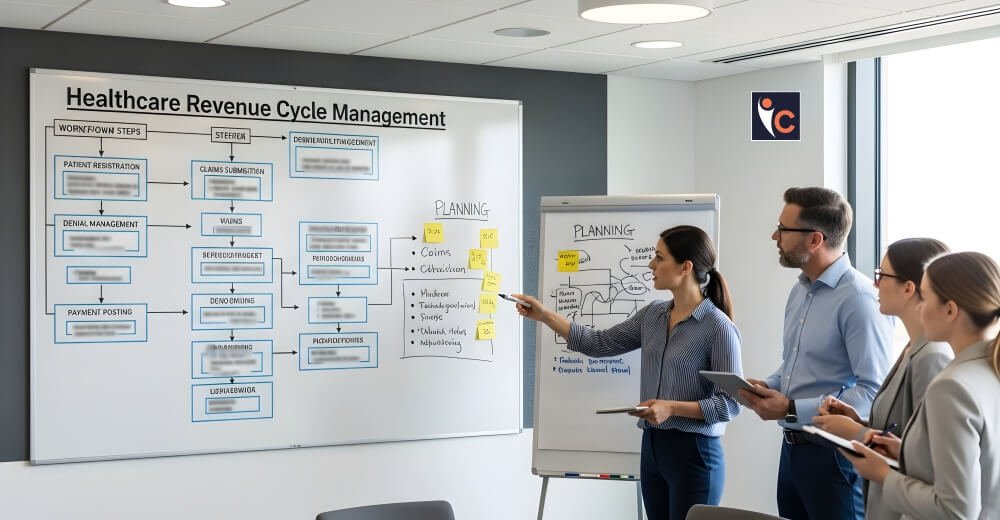The health care industry is experiencing unprecedented change, and the foundation of this change is developing IN-Vitro Diagnostic machines from Artificial Intelligence (AI) and Machine Learning (ML) as the prime drivers. The machines are changing the way doctors interpret laboratory tests, enabling them to diagnose quicker, more accurately, and highly personalized. As technology continues to converge with medicine, convergence of IVDs systems with Artificial Intelligence is a move toward precision medicine.
What is IN-Vitro Diagnostic?
IN-Vitro Diagnostic refers to blood, tissue, or other body specimen drawn from the human body tests to identify disease, condition, or infection. It is the very foundation of preventive health, diagnosis, and monitoring of treatment. From pregnancy and glucose testing to cancer biomarker testing, IVDs systems form the basis of medical decision-making.
The Role of AI in IN-Vitro Diagnostic Technologies
AI can play a revolutionary role in the IN-Vitro Diagnostic industry. With the capability of processing big data, AI can manage complicated biological data with unparalleled speed and accuracy. There follows the way AI is improving IN-Vitro Diagnostic efficacy:
- Automated Pattern Recognition: AI recognizes abnormalities in test outcomes faster than the traditional approach, spotting warning signs of illness even before symptoms arise.
- Less Human Mistake: Algorithms minimize diagnostic mistake through cross-verification of gargantuan databases and adding consistency.
- Personalized Reports: AI creates personalized reports dependent on the patient’s history and genes, further personalizing therapy.
Machine Learning Increasing IN-Vitro Diagnostic Accuracy
Machine Learning (ML), as a branch of Artificial Intelligence, gets better with time because it learns from experience based on data. ML algorithms can be trained on hundreds of test samples to recognize patterns, outliers, or correlations that may not be apparent to the naked eye. This is how ML enhances IN-Vitro Diagnostic performance:
- Predictive Diagnostics: With ML, the possibility of a disease can be foretold using existing biomarkers and past data, allowing for early intervention.
- Data Integration: ML integrates data from various sources—genomic, proteomic, clinical—to create an integrated diagnostic perspective.
- Anomaly Detection: It learns to identify normal and abnormal behavior, continuously refining itself with the identification of outliers in diagnostic outcomes.
Physical Advantage of AI & ML in IN-Vitro Diagnostic Procedures
AI and ML deployment in IVDs devices creates various physical benefits:
1. Enhanced Turnaround Time
AI techniques read samples and deliver results within minutes, reducing laboratory turnaround time dramatically.
2. Scalability in testing
Computerized high-throughput testing allows laboratories to test thousands of samples at the same time without any accuracy loss.
3. Enhanced Decision Making
Real-time data and probability-driven outcomes ease clinicians’ decision-making.
4. Enhanced Patient Outcomes
Enhanced, accelerated diagnostics lead to prompt treatments and enhanced patient prognoses.
Constraints in Implementing AI in IN-Vitro Diagnostic
While very promising, the implementation of AI in IN-Vitro Diagnostic devices is faced with:
- Data Privacy and Security: Medical information is highly sensitive, and practices must be implemented to secure it when transmitted through AI.
- Regulatory Approvals: AI and ML-based solutions require extensive regulatory testing, thereby retarding implementation.
- Interoperability Challenges: Getting AI systems to work with existing laboratory systems may come with some technical challenges.
Practical Application of AI in IN-Vitro Diagnostic
A few research institutes and centers have already applied AI-driven IVDs solutions to practical applications:
- Cancer Detection: AI detects early cancers by scanning protein levels and detecting mutations in DNA.
- Infectious Disease Diagnosis: ML makes it possible to detect viral and bacterial infections at a quicker rate than current tests.
- Chronic Disease Surveillance: Disease biomarkers like diabetes and cardiovascular disease are being monitored by AI, and predictive feedback is given.
Future IN-Vitro Diagnostic with AI
The future of IN-Vitro Diagnostic will be more digital and intelligent. With the application of AI and ML:
Home Diagnostics in Real-time: Smart devices will enable home diagnostics, and AI will automatically interpret the results.
- Integration of Precision Medicine: Personalized diagnosis will become the standard, which will allow one to tailor treatment protocols according to one’s own biology.
- AI-Driven R&D: Machine learning will make research and development of new diagnostic tests rational and speed up time to market.
Marriage between AI and ML with IN-Vitro Diagnostic machines is future-fodder no more—it is revolutionizing diagnostics now. There are issues, of course, but they are well and truly overwhelmed by benefit. We are moving towards the era when AI doesn’t merely assist doctors—it is a established diagnostic partner.
Conclusion:
The influence of AI and Machine Learning on IVDs devices is a paradigm shift in the diagnosis of medicine. With greater accuracy, cost efficiency, and better patient outcomes, these technologies are becoming the benchmark for medical excellence. As AI evolves further and goes mainstream, its application in IN-Vitro Diagnostic will become progressively more influential, turning healthcare into an ever more responsive and data-oriented business.





